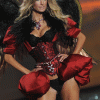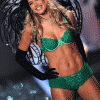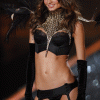Before anything else, I want to apologise for doing only one real pot last week. Between the holiday and my race to complete my NaNoWriMo novel, I had very little time for full fledged blog entries! Even with overtime at work this week, I should have more time to devote to the blog now!
The good news is that I completed my NaNoWriMo novel today. In the end it turned out to be 50,796 words--796 words over the 50,000 needed to win National Novel Writing Month. I am not sure I have ever said what my novel is about in this blog, so I suppose I should now. It is entitled Witchhunter and is set in Cromwellian England during the rule of the Major-Generals. Just as in the real world, innocent old women and men are sometimes accused and convicted of witchcraft. Unlike the real world, witches are very much real in the novel. They are also very powerful, and they have their own agenda. Since witches are real in the world of my novel, this also means that there are those who fight them. The plot of my novel then finds its hero, a Royalist trained in fighting the occult, trying to save a small village from the onslaught of witches. Of course, to do this he must also avoid the Parliamentarians in power, who would gladly see him in jail.
I must admit that in writing Witchhunter I took quite a journey. On 1 November I started the novel with no intentions of it eve seeing publication. I was simply writing it as a lark, to see if I could indeed write a 50,000 word novel in a month or less. As I continued to write, something unusual happened. I started to fall in love with the characters and became engrossed in the plot. While I knew that writing so many words in so short a time, much of what I wrote was, well, crap, I also realised that it was crap with potential to be something more. Quite simply, it occurred to me that my unpublishable NaNoWriMo novel could be whipped into shape as something that might just be publishable.
I realise that Witchhunter will require a lot of work. Writing at such a high speed, I had little time for research. While my knowledge of England during the Cromwellian tyranny is considerable when compared to the average American, it is not that of an expert. I know some historical inaccuracies crept into the novel. I will have to do research to correct those, as well as to better capture the flavour of the era. As I mentioned earlier, I am not quite happy with the McGuffin of the novel. I intend to change it into something that is more interesting and more original. As to the plot itself, I think that I drew my big guns too fast--flying demons appear as early as Chapter 5. I think I am going to turn the plot into more of a mystery, unfolding gradually, with nothing so obvious as flying demons until later in the book.
I must say that over all I am happy with the characters. I might change my hero's first name. Currently he is named Lieutenant William Reade. I am thinking that Lieutenant Geoffrey Reade might sound more interesting, not to mention hint at his genealogy (he is descended from the Plantagenets). I am also thinking I might rewrite the character of the vicar, Reverend Thomas. As Witchhunter is now, Reverend Thomas starts out as a staunch Puritan and Parliamentarian, who is very hostile to Lieutenant Reade. He later becomes an ally of Reade in his battle against the witches. I think this is a bit unrealistic, given how strong feelings between Cavaliers and Roundheads were at the time. I have then decided that while Reverend Thomas will still be a Puritan, he will not be a Parliamentarian or a Royalist. This would make him a bit more receptive to Lieutenant Reade's agenda and more likely to be won over by him.
At any rate, I do think I will rewrite Witchhunter with the goal of having it published. Whether it will ever be published I cannot say, but I think even in the very rough, 50796 draught I produced in the past 29 days, there is some worthwhile material. I suppose this just goes to show that sometimes one's own writing can surprise him or her.
Sunday 29 November 2009
Saturday 28 November 2009
Paperback Writer
I hope you will forgive me for not offering up a full fledged entry tonight, but the past few days (including today) I have been working hard on my NaNoWriMo novel. Fortunately, I only have 2000 words to go, which means I will finish the novel tomorrow.
Rather than leaving you with no post at all, then, I will leave you with the promotional film for "Paperback Writer" by The Beatles. It was in May 1965 that Michael Lindsay-Hogg directed four promo films of "Paperback Writer" and three of "Rain." Most of these promo clips were straight forward performance clips, but one each of "Paperback Writer" and "Rain" veered from this course. These two clips were shot around Chiswick House in London, and featured The Beatles relaxing around the house's gardens and conservatory and strolling about. Surprisingly for the time, the television outlets preferred these promo films to the traditional performance clips!
Rather than leaving you with no post at all, then, I will leave you with the promotional film for "Paperback Writer" by The Beatles. It was in May 1965 that Michael Lindsay-Hogg directed four promo films of "Paperback Writer" and three of "Rain." Most of these promo clips were straight forward performance clips, but one each of "Paperback Writer" and "Rain" veered from this course. These two clips were shot around Chiswick House in London, and featured The Beatles relaxing around the house's gardens and conservatory and strolling about. Surprisingly for the time, the television outlets preferred these promo films to the traditional performance clips!
Wednesday 25 November 2009
Happy Thanksgiving 2009
Well, I am tired from work, I am working fervently to finish my NaNoWriMo novel, and tomorrow is Thanksgiving. Rather than doing a full fledged blog post, then, I thought I would leave you with a few videos.
First up is a live performance of "Kings and Queens" by Aerosmith. The song addresses the struggles of humanity throughout time, from the Dark Age (references to Vikings) to the French Revolution (references to guillotines).
Next up is "John Barleycorn" performed by Traffic. "John Barleycorn" is actually an English folksong dating back to at least the 16th century. As many of you might know, the album upon which Traffic's version appeared was titled John Barleycorn Must Die.
Last up is "The Highwayman" by Loreena McKennitt. The song is essentially the poem "The Highwayman" by Alfred Noyes set to music. First published in 1906, it was Noyes' first big success.
To all of my readers in the United States a happy Thanksgiving, ant to the rest of you a happy Thursday!
First up is a live performance of "Kings and Queens" by Aerosmith. The song addresses the struggles of humanity throughout time, from the Dark Age (references to Vikings) to the French Revolution (references to guillotines).
Next up is "John Barleycorn" performed by Traffic. "John Barleycorn" is actually an English folksong dating back to at least the 16th century. As many of you might know, the album upon which Traffic's version appeared was titled John Barleycorn Must Die.
Last up is "The Highwayman" by Loreena McKennitt. The song is essentially the poem "The Highwayman" by Alfred Noyes set to music. First published in 1906, it was Noyes' first big success.
To all of my readers in the United States a happy Thanksgiving, ant to the rest of you a happy Thursday!
Sunday 22 November 2009
Why The Twilight Saga Will Not Be a Classic
This weekend the move New Moon raked in a whopping $140 million at the box office. If it was not already known that the series of books known as The Twilight Saga was a phenomenon, this would certainly prove that it is. Indeed, when the final book in the series, Breaking Dawn, was published in August, 2008, it sold 1.3 million copies in the first twenty four hours alone. Today it is hard to avoid the series' myriad fans, who seem to be everywhere.
Of course, any time a TV series, movie, book, or rock band becomes a phenomenon, there are always detractors. The Beatles had more than their share of detractors when Please Please Me was released in 1963. Star Wars had its share of detractors in the summer of 1977. While it is typical for phenomena in any medium to have detractors, it seems as if The Twilight Saga has more than its fair share of them. Indeed, I would say what separates The Twilight Saga from The Beatles or Star Wars is that it actually deserves to have detractors. As if you had not guessed by now, I am among those detractors (here I must give credit where credit is due--beyond my dislike of the Twilight series, this post was inspired by Serena Whitney's great write up on Twilight at KillerFilm).
For me the simple fact is that, unlike The Beatles, Star Wars, the Sixties Batman show, or Harry Potter, The Twilight Saga is simply not very good. This is not great literature that we are talking about. It is not even mediocre literature. As a whole The Twilight Saga is not only very poorly written, but it is also very, very derivative. Stephenie Myer created nothing original with The Twilight Saga. Instead, she borrowed bits and pieces from works in various media spanning over 100 years.
Indeed, the idea of the vampire romance is probably the least original aspect of the series. Romance and sexuality has been present in vampire fiction ever since Dracula was published in 1897. Not only is there romantic overtones in the relationship between Dracula and Mina Harker, it is overtly sexual. Both the romantic and sexual aspects of the relationship between Dracula and Mina would become emphasised in the movies, particularly in the 1958 Hammer adaptation of Dracula and its sequels, as well as the 1979 and 1992 adaptations. In fiction the romantic and sexual aspects of Dracula and Mina's relationship would become the heart of Fred Saberhagen's classic The Dracula Tape and its sequels. Other authors would follow suit. Indeed, Anne Rice made millions in exploiting the sexuality Bram Stoker had endowed the vampire.
Of course, there are those who will argue that Stephenie Meyer invented the young adult vampire romance. This is certainly not the case. Indeed, she was actually a latecomer to the field of young adult vampire romances. What may have been the first young adult vampire romance was The Vampire Diaries by L. J. Smith, the first trilogy of which was published way back in 1991. The plot of the first book in that trilogy, The Awakening, concerned beautiful high school student Elena who falls in love with a centuries old vampire. Just like Twilight, The Awakening and the other books are told from the heroine's point of view. Another vampire romance series which may well have served as fodder is The Southern Vampire Mysteries (the basis for the TV show True Blood). It also featured a young heroine who fell in love with a vampire. The first book in the series was published in 2001. The series is also narrated in first person by the heroine, Sookie Stackhouse, just as Bella narrates Twilight What sets The Southern Vampire Mysteries apart from either The Vampire Diaries or The Twilight Saga is that it is set in a greater world where almost everything supernatural is real (fairy blood runs in Sookie's family).
Indeed, not only did Stephenie Meyer not invent the young adult vampire romance, but her main character, Isabella "Bella" Swan is nearly a clone of both Elena Gilbert of The Vampire Diaries and Sookie Stackhouse of The Southern Vampire Mysteries. Elena Gilbert is beautiful, popular, and intelligent who falls in love with an allegedly young man who is secretly a vampire. Sookie Stackhouse is blue eyed, buxom blonde who is also a telepath. She also falls in love with a man who is secretly a vampire. This brings us to Bella Swan, who is more similar to Elena Gilbert than Sookie Stackhouse. Now to her credit, Stefenie Meyer does try to convince readers that Bella is a shy, lonely, awkward teen, an utterly average girl. In the end, however, Meyer does not follow through with this, so that Bella is no more lonely or awkward than either Elena or Sookie. On her first day at her new high school in Forks, Washington, Bella makes friends, and quite easily. Not only does she make friends, but she also has quite a few teenage boys competing for her attention. Despite Stefenie Meyr's claim (through Bella's first person narration) that Bella is shy, awkward, and lonely, she is quite the opposite--Bella is friendly, popular, and apparently beautiful enough to attract the attention of several boys. She is Elena Gilbert of The Vampire Diaries if Elena claimed to be shy and lonely!
Now there are some major differences between Sookie Stackhouse and Bella Swan. Sookie is an adult barmaid (she's in her twenties) rather than a high school student and Sookie possesses fairy blood, but Bella still resembles Sookie in one respect. Sookie is a telepath who can read the minds of mortals, but not vampires and other supernatural entities. Bella is a mortal whose mind the vampire Edward Cullen cannot read. Given how much Twilight owes to previous vampire literature, it is difficult not to wonder if Edward's inability to read Bella's thoughts does not owe something to Sookie's inability to read vampire's thoughts.
Of course, while many might admit that Bella is derivative, I am willing to bet they will assert that Edward Cullen is original. In my humble opinion, however, Edward is only original in as far as he is a vampire who "sparkles." As pointed out above, sexuality has been present in vampire fiction since Dracula, so that there have been no shortage of sexy vampires. In film sex was brought to the fore with Christopher Lee's portrayal of Dracula in the 1958 film of the same name. It was made even more blatant in Frank Langella's portrayal of Dracula in the 1979 film of the same name. Anne Rice made millions from the vampire Lestat, an overtly sexual creature. Edward Cullen is simply the nth reverberation of the sexy vampire. That having been said, Edward Cullen is not only the spiritual descendent of Dracula and Lestat, he is also patterned after heroes from classic literature. Like Fitzwilliam Darcy from Pride and Prejudice, he is aloof and distant. Like Heathcliff from Wuthering Heights he is passionate and temperamental. Like Edward Rochester in Jane Eyre, he sees himself as a monster and has Byronic overtones. Of course, the problem with Edward Cullen as a product of both the sexual, romantic vampire and the heroes of Jane Austen and the Bronte sisters' novels is that he is an overly simplistic creation. Indeed, it must be pointed out that for all that his love for Bella is romanticised, in Twilight he more or less stalks her. It is hard seeing Mr. Darcy or even Heathcliff doing that!
Now I know that there are those that are going to insist Stepenie Meyer's interpretation of vampires is original. After all, they can go out in sunlight, do not have fangs (they drink blood by biting with their particularly powerful teeth), and are not harmed by holy items, holy water, or garlic. They are also spectacularly beautiful, a means through which they lure their victims. Even when it comes to her vampires, Meyer has not been particularly original. First, I must point out that the idea of vampires being harmed by sunlight is a rather recent invention. According to the old folklore, vampires could go out in the daylight--they simply preferred to operate at night. Indeed, in the novel Dracula, Dracula does go about in the day, although it is not particularly comfortable for him. It was not until the film Nosferatu was released in 1922 that the idea that sunlight harmed vampires was introduced. Second, as to Meyer's vampires not having fangs, this has been done before. In Suzee McKee Charnas' The Vampire Tapestry, the vampires do not have fangs but drink blood through a needle contained in their tongues--an idea found in Polish folklore. In the series The Saga of Darren Shan (AKA Cirque du Freak) by Darren Shan, first published in 2000, the vampires do not have fangs either. To drink blood they but cut the a vein in the arm of a victim with one of their sharp nails. Third, as to Meyer's vampires not being affected by garlic, silver, or holy objects, this has been true of a good number of vampires in various media over the years. In the classic film Fright Night, it is established that it is not so much the holy object itself that harms vampires, but the belief of the one wielding the object. The vampires in The Saga of Darren Shan are not harmed by silver, garlic, or holy objects at all. Fourth, as to the beauty of Meyer's vampires, this has been true of many vampires in many media throughout the years. Indeed, in the classic novella by Sheridan Le Fanu, Carmilla, the title character is portrayed as beautiful. The vampire Lestat, the main character of Anne Rice's Vampire Chronicles, is portrayed as incredibly handsome. Indeed, in the history of vampire fiction, ugly vampires tend to be a rarity! Ultimately, about the only original thing about Meyer's vampires is that they sparkle in the sun, a rather dubious contribution to vampire lore...
Meyer is also derivative when it comes to the society of her vampires. Many of her vampires belong to covens, such as the Cullens to which Edward belongs or the powerful Volturi in Italy. Again, this is not an original idea. In The Vampire Chronicles, Anne Rice also portrayed vampires belonging to covens, an example being the Th��tre des Vampires (a theatrical troupe which also happens to be a coven of vampires). With the role playing game Vampire: the Masquerade, White Wolf Game Studio went one step further, with vampires belonging to entire clans. It must be pointed out that Meyer is not particularly original with regards to werewolf or shapeshifter society either. She portrays werewolves as belonging to tribes or packs. This is an idea that can at least goes back to The Wolfen by Whitney Streiber. In White Wolf Game Studio's Werewolf: the Apocalypse, werewolves belong to tribes. With regard to both vampire and werewolf society, Meyer was not particularly original.
Of course, in Stephenie Meyer's defence it must be pointed out that The Twilight Saga was inspired by a dream she had in which an average girl was talking to an incredibly beautiful vampire in a forest. She has also stated that she did not research vampire lore before writing the books. It is fully possible, perhaps even probable, that Meyer did not intentionally borrow so much from so many different sources for The Twilight Saga. After all, so many works on vampires in various media have so permeated our society that one can be influenced by them without ever having read or seen them. Quite simply, because one has not read Dracula does not mean that one might unconsciously borrow from it. Besides, it must also be pointed out that a book or movie can be derivative and still be good. The movie Fright Night is regarded by a classic by many, yet it brings little that is original to vampire lore. The problem is that not only is The Twilight Saga not very original, it is also not very good.
The overall poor quality of The Twilight Saga can be seen its portrayal of the relationship between Bella and Edward, which is extremely dysfunctional. I will not go into just how dysfunctional their relationship is, as Serena Whitney already did that in her piece on KillerFilm; however, I will point out one thing that Serena left out. At the start of Twilight Bella Swan is 17 years old, while Edward Cullen is 104 years old (having been born in 1901). While Edward may appear to be a teenager or young adult, he is then a very old man. Indeed, the age difference between Edward and Bella (87 years) is over twice the age difference between Humbert Humbert and Lolita in Vladimir Nabokov's classic novel! Far from being a romantic figure, Edward Cullen is then the clinical definition of an ephebophile, someone with an overwhelming sexual preference for individuals in mid to late adolescence. Ultimately, Edward Cullen differs very little from Humbert Humbert in Lolita...or Gary Glitter for that matter, yet he is regarded as a heartthrob by millions while Humbert and Glitter are regarded, quite rightfully, as sick.
While Stephenie Meyer romanticises what is essentially a very dysfunctional relationship (and it goes farther than the difference in ages between the two lead characters--just read Serena's article), she does not handle her other characters very well either. In fact, Meyer's characters are not so much characters as they are the same old literary stereotypes. As pointed out above, Edward Cullen is largely based on the romantic, Byronic figures of earlier literature, although quite obviously he has more in common with Humbert Humbert than Mr. Darcy. Bella is little more than what is known science fiction fandom and literary criticism as a Mary Sue, a character who is overly idealised and primarily operates as wish fulfilment for both the writer and her readers. Meyer's other characters are not well developed either, resembling literary clich�s more than three dimensional human beings. Indeed, many of Meyer's characters (the two leads included) are shallow, immature, and ultimately uninteresting.
Even given its characters, The Twilight Saga would probably be more readable if it was not for Meyer is very poor when it comes to developing plots as well. For the first 300 pages or so of Twilight there is no indication of a plot other than the relationship between Bella and Edward. Worse yet, probably half of those 300 pages are dedicated to describing Edward's beauty to the point that Meyer must have exhausted Roget's Thesaurus in writing the book. The only real action in the entire book happens at the very end of the book and, even then happens very swiftly. Worse yet, there are times Meyer describes plot points and action so poorly that it is difficult to tell what happened. This is complicated by the prose itself, which is often both florid and over the top. Indeed, the characters' dialogue itself is overwrought. Bella talks like no 21st century teenage girl most of us would know. The Cullens are not simply beautiful--they are "devastatingly, inhumanly beautiful." Bella does not simply notice Edward sitting very close to her, she is "electrically aware" of it. Between Meyer's prose and Bella's dialogue, Twilight is more overwrought that any romance Harlequin may have published.
While I think it is clear that The Twilight Saga is not a series of good books, I must interject one thing. I am not so sure that anyone should necessarily bash Twilight fans. First, I must point out that The Twilight Saga has gotten many young women to read who might not be reading otherwise. If these young women move onto other books (which, with any luck, will be far superior in quality), then The Twilight Saga will have actually done a very good service. Second, I must point out that all of us have probably loved something that was, well, junk at one time or another in our lives. When I was a youngster I watched the TV show Battlestar Galactica loyally, every single week. Many years later I caught the series on the Sci-Fi Channel and tried watching it. I could not make it through even one episode. I tried watching other episode with the same results. I came to a realisation that this show I loved as a kid was very, very bad. I would say that we should then condemn no one for loving The Twilight Saga, although I think I can speak for many of us that I wish they would stop talking about how "great" it is.
Regardless, it seems clear to me that, despite all the furore over Twilight, it will not come to be regarded as a classic. The classics of literature, even the classics of young adult literature, have several things in common. They are well written. They have fully developed characters. They are quite readable. This is true of A Wrinkle in Time. It is true of The Chronicles of Narnia. It is true of the Harry Potter series. Sadly, it is not true of The Twilight Saga. I cannot help but think that in the end The Twilight Saga is not so much a literary phenomenon than it is a simple fad, like pet rocks or mood rings. If that is the case, then The Twilight Saga will not join such works as Lord of the Rings, The Chronicles of Prydain, or Little Women as a literary classic. Instead, it will be remembered in much the same way as pet rocks and mood rings are today--as a craze that swept the nation for a time before fading away.
Of course, any time a TV series, movie, book, or rock band becomes a phenomenon, there are always detractors. The Beatles had more than their share of detractors when Please Please Me was released in 1963. Star Wars had its share of detractors in the summer of 1977. While it is typical for phenomena in any medium to have detractors, it seems as if The Twilight Saga has more than its fair share of them. Indeed, I would say what separates The Twilight Saga from The Beatles or Star Wars is that it actually deserves to have detractors. As if you had not guessed by now, I am among those detractors (here I must give credit where credit is due--beyond my dislike of the Twilight series, this post was inspired by Serena Whitney's great write up on Twilight at KillerFilm).
For me the simple fact is that, unlike The Beatles, Star Wars, the Sixties Batman show, or Harry Potter, The Twilight Saga is simply not very good. This is not great literature that we are talking about. It is not even mediocre literature. As a whole The Twilight Saga is not only very poorly written, but it is also very, very derivative. Stephenie Myer created nothing original with The Twilight Saga. Instead, she borrowed bits and pieces from works in various media spanning over 100 years.
Indeed, the idea of the vampire romance is probably the least original aspect of the series. Romance and sexuality has been present in vampire fiction ever since Dracula was published in 1897. Not only is there romantic overtones in the relationship between Dracula and Mina Harker, it is overtly sexual. Both the romantic and sexual aspects of the relationship between Dracula and Mina would become emphasised in the movies, particularly in the 1958 Hammer adaptation of Dracula and its sequels, as well as the 1979 and 1992 adaptations. In fiction the romantic and sexual aspects of Dracula and Mina's relationship would become the heart of Fred Saberhagen's classic The Dracula Tape and its sequels. Other authors would follow suit. Indeed, Anne Rice made millions in exploiting the sexuality Bram Stoker had endowed the vampire.
Of course, there are those who will argue that Stephenie Meyer invented the young adult vampire romance. This is certainly not the case. Indeed, she was actually a latecomer to the field of young adult vampire romances. What may have been the first young adult vampire romance was The Vampire Diaries by L. J. Smith, the first trilogy of which was published way back in 1991. The plot of the first book in that trilogy, The Awakening, concerned beautiful high school student Elena who falls in love with a centuries old vampire. Just like Twilight, The Awakening and the other books are told from the heroine's point of view. Another vampire romance series which may well have served as fodder is The Southern Vampire Mysteries (the basis for the TV show True Blood). It also featured a young heroine who fell in love with a vampire. The first book in the series was published in 2001. The series is also narrated in first person by the heroine, Sookie Stackhouse, just as Bella narrates Twilight What sets The Southern Vampire Mysteries apart from either The Vampire Diaries or The Twilight Saga is that it is set in a greater world where almost everything supernatural is real (fairy blood runs in Sookie's family).
Indeed, not only did Stephenie Meyer not invent the young adult vampire romance, but her main character, Isabella "Bella" Swan is nearly a clone of both Elena Gilbert of The Vampire Diaries and Sookie Stackhouse of The Southern Vampire Mysteries. Elena Gilbert is beautiful, popular, and intelligent who falls in love with an allegedly young man who is secretly a vampire. Sookie Stackhouse is blue eyed, buxom blonde who is also a telepath. She also falls in love with a man who is secretly a vampire. This brings us to Bella Swan, who is more similar to Elena Gilbert than Sookie Stackhouse. Now to her credit, Stefenie Meyer does try to convince readers that Bella is a shy, lonely, awkward teen, an utterly average girl. In the end, however, Meyer does not follow through with this, so that Bella is no more lonely or awkward than either Elena or Sookie. On her first day at her new high school in Forks, Washington, Bella makes friends, and quite easily. Not only does she make friends, but she also has quite a few teenage boys competing for her attention. Despite Stefenie Meyr's claim (through Bella's first person narration) that Bella is shy, awkward, and lonely, she is quite the opposite--Bella is friendly, popular, and apparently beautiful enough to attract the attention of several boys. She is Elena Gilbert of The Vampire Diaries if Elena claimed to be shy and lonely!
Now there are some major differences between Sookie Stackhouse and Bella Swan. Sookie is an adult barmaid (she's in her twenties) rather than a high school student and Sookie possesses fairy blood, but Bella still resembles Sookie in one respect. Sookie is a telepath who can read the minds of mortals, but not vampires and other supernatural entities. Bella is a mortal whose mind the vampire Edward Cullen cannot read. Given how much Twilight owes to previous vampire literature, it is difficult not to wonder if Edward's inability to read Bella's thoughts does not owe something to Sookie's inability to read vampire's thoughts.
Of course, while many might admit that Bella is derivative, I am willing to bet they will assert that Edward Cullen is original. In my humble opinion, however, Edward is only original in as far as he is a vampire who "sparkles." As pointed out above, sexuality has been present in vampire fiction since Dracula, so that there have been no shortage of sexy vampires. In film sex was brought to the fore with Christopher Lee's portrayal of Dracula in the 1958 film of the same name. It was made even more blatant in Frank Langella's portrayal of Dracula in the 1979 film of the same name. Anne Rice made millions from the vampire Lestat, an overtly sexual creature. Edward Cullen is simply the nth reverberation of the sexy vampire. That having been said, Edward Cullen is not only the spiritual descendent of Dracula and Lestat, he is also patterned after heroes from classic literature. Like Fitzwilliam Darcy from Pride and Prejudice, he is aloof and distant. Like Heathcliff from Wuthering Heights he is passionate and temperamental. Like Edward Rochester in Jane Eyre, he sees himself as a monster and has Byronic overtones. Of course, the problem with Edward Cullen as a product of both the sexual, romantic vampire and the heroes of Jane Austen and the Bronte sisters' novels is that he is an overly simplistic creation. Indeed, it must be pointed out that for all that his love for Bella is romanticised, in Twilight he more or less stalks her. It is hard seeing Mr. Darcy or even Heathcliff doing that!
Now I know that there are those that are going to insist Stepenie Meyer's interpretation of vampires is original. After all, they can go out in sunlight, do not have fangs (they drink blood by biting with their particularly powerful teeth), and are not harmed by holy items, holy water, or garlic. They are also spectacularly beautiful, a means through which they lure their victims. Even when it comes to her vampires, Meyer has not been particularly original. First, I must point out that the idea of vampires being harmed by sunlight is a rather recent invention. According to the old folklore, vampires could go out in the daylight--they simply preferred to operate at night. Indeed, in the novel Dracula, Dracula does go about in the day, although it is not particularly comfortable for him. It was not until the film Nosferatu was released in 1922 that the idea that sunlight harmed vampires was introduced. Second, as to Meyer's vampires not having fangs, this has been done before. In Suzee McKee Charnas' The Vampire Tapestry, the vampires do not have fangs but drink blood through a needle contained in their tongues--an idea found in Polish folklore. In the series The Saga of Darren Shan (AKA Cirque du Freak) by Darren Shan, first published in 2000, the vampires do not have fangs either. To drink blood they but cut the a vein in the arm of a victim with one of their sharp nails. Third, as to Meyer's vampires not being affected by garlic, silver, or holy objects, this has been true of a good number of vampires in various media over the years. In the classic film Fright Night, it is established that it is not so much the holy object itself that harms vampires, but the belief of the one wielding the object. The vampires in The Saga of Darren Shan are not harmed by silver, garlic, or holy objects at all. Fourth, as to the beauty of Meyer's vampires, this has been true of many vampires in many media throughout the years. Indeed, in the classic novella by Sheridan Le Fanu, Carmilla, the title character is portrayed as beautiful. The vampire Lestat, the main character of Anne Rice's Vampire Chronicles, is portrayed as incredibly handsome. Indeed, in the history of vampire fiction, ugly vampires tend to be a rarity! Ultimately, about the only original thing about Meyer's vampires is that they sparkle in the sun, a rather dubious contribution to vampire lore...
Meyer is also derivative when it comes to the society of her vampires. Many of her vampires belong to covens, such as the Cullens to which Edward belongs or the powerful Volturi in Italy. Again, this is not an original idea. In The Vampire Chronicles, Anne Rice also portrayed vampires belonging to covens, an example being the Th��tre des Vampires (a theatrical troupe which also happens to be a coven of vampires). With the role playing game Vampire: the Masquerade, White Wolf Game Studio went one step further, with vampires belonging to entire clans. It must be pointed out that Meyer is not particularly original with regards to werewolf or shapeshifter society either. She portrays werewolves as belonging to tribes or packs. This is an idea that can at least goes back to The Wolfen by Whitney Streiber. In White Wolf Game Studio's Werewolf: the Apocalypse, werewolves belong to tribes. With regard to both vampire and werewolf society, Meyer was not particularly original.
Of course, in Stephenie Meyer's defence it must be pointed out that The Twilight Saga was inspired by a dream she had in which an average girl was talking to an incredibly beautiful vampire in a forest. She has also stated that she did not research vampire lore before writing the books. It is fully possible, perhaps even probable, that Meyer did not intentionally borrow so much from so many different sources for The Twilight Saga. After all, so many works on vampires in various media have so permeated our society that one can be influenced by them without ever having read or seen them. Quite simply, because one has not read Dracula does not mean that one might unconsciously borrow from it. Besides, it must also be pointed out that a book or movie can be derivative and still be good. The movie Fright Night is regarded by a classic by many, yet it brings little that is original to vampire lore. The problem is that not only is The Twilight Saga not very original, it is also not very good.
The overall poor quality of The Twilight Saga can be seen its portrayal of the relationship between Bella and Edward, which is extremely dysfunctional. I will not go into just how dysfunctional their relationship is, as Serena Whitney already did that in her piece on KillerFilm; however, I will point out one thing that Serena left out. At the start of Twilight Bella Swan is 17 years old, while Edward Cullen is 104 years old (having been born in 1901). While Edward may appear to be a teenager or young adult, he is then a very old man. Indeed, the age difference between Edward and Bella (87 years) is over twice the age difference between Humbert Humbert and Lolita in Vladimir Nabokov's classic novel! Far from being a romantic figure, Edward Cullen is then the clinical definition of an ephebophile, someone with an overwhelming sexual preference for individuals in mid to late adolescence. Ultimately, Edward Cullen differs very little from Humbert Humbert in Lolita...or Gary Glitter for that matter, yet he is regarded as a heartthrob by millions while Humbert and Glitter are regarded, quite rightfully, as sick.
While Stephenie Meyer romanticises what is essentially a very dysfunctional relationship (and it goes farther than the difference in ages between the two lead characters--just read Serena's article), she does not handle her other characters very well either. In fact, Meyer's characters are not so much characters as they are the same old literary stereotypes. As pointed out above, Edward Cullen is largely based on the romantic, Byronic figures of earlier literature, although quite obviously he has more in common with Humbert Humbert than Mr. Darcy. Bella is little more than what is known science fiction fandom and literary criticism as a Mary Sue, a character who is overly idealised and primarily operates as wish fulfilment for both the writer and her readers. Meyer's other characters are not well developed either, resembling literary clich�s more than three dimensional human beings. Indeed, many of Meyer's characters (the two leads included) are shallow, immature, and ultimately uninteresting.
Even given its characters, The Twilight Saga would probably be more readable if it was not for Meyer is very poor when it comes to developing plots as well. For the first 300 pages or so of Twilight there is no indication of a plot other than the relationship between Bella and Edward. Worse yet, probably half of those 300 pages are dedicated to describing Edward's beauty to the point that Meyer must have exhausted Roget's Thesaurus in writing the book. The only real action in the entire book happens at the very end of the book and, even then happens very swiftly. Worse yet, there are times Meyer describes plot points and action so poorly that it is difficult to tell what happened. This is complicated by the prose itself, which is often both florid and over the top. Indeed, the characters' dialogue itself is overwrought. Bella talks like no 21st century teenage girl most of us would know. The Cullens are not simply beautiful--they are "devastatingly, inhumanly beautiful." Bella does not simply notice Edward sitting very close to her, she is "electrically aware" of it. Between Meyer's prose and Bella's dialogue, Twilight is more overwrought that any romance Harlequin may have published.
While I think it is clear that The Twilight Saga is not a series of good books, I must interject one thing. I am not so sure that anyone should necessarily bash Twilight fans. First, I must point out that The Twilight Saga has gotten many young women to read who might not be reading otherwise. If these young women move onto other books (which, with any luck, will be far superior in quality), then The Twilight Saga will have actually done a very good service. Second, I must point out that all of us have probably loved something that was, well, junk at one time or another in our lives. When I was a youngster I watched the TV show Battlestar Galactica loyally, every single week. Many years later I caught the series on the Sci-Fi Channel and tried watching it. I could not make it through even one episode. I tried watching other episode with the same results. I came to a realisation that this show I loved as a kid was very, very bad. I would say that we should then condemn no one for loving The Twilight Saga, although I think I can speak for many of us that I wish they would stop talking about how "great" it is.
Regardless, it seems clear to me that, despite all the furore over Twilight, it will not come to be regarded as a classic. The classics of literature, even the classics of young adult literature, have several things in common. They are well written. They have fully developed characters. They are quite readable. This is true of A Wrinkle in Time. It is true of The Chronicles of Narnia. It is true of the Harry Potter series. Sadly, it is not true of The Twilight Saga. I cannot help but think that in the end The Twilight Saga is not so much a literary phenomenon than it is a simple fad, like pet rocks or mood rings. If that is the case, then The Twilight Saga will not join such works as Lord of the Rings, The Chronicles of Prydain, or Little Women as a literary classic. Instead, it will be remembered in much the same way as pet rocks and mood rings are today--as a craze that swept the nation for a time before fading away.
Saturday 21 November 2009
NaNoWriMo Take 3: The Path Not Chosen
Those of you who read this blog regularly know that I am participating in the event known as National Novel Writing Month or, more simply, NaNoWriMo, in which one attempts to write a 50,000 word novel in the 30 days of November. I must say that it has been a challenge for me. For much of the month I have been behind on my word count. For a time, early this week, I was actually ahead on my word count. Now I am behind again! Fortunately, I am now at a bit over 30,000 words. With the Thanksgiving holiday coming up, I know I can complete my novel in time.
At any rate, National Novel Writing Month has gotten me to thinking about the writing process. Those who have never written anything other than a letter or a grocery list may not realise this, but not all writers go about writing in the same way. The writing process varies for each of us. And in some cases it may vary according to what they are writing. My process for writing nonfiction is different from my process for writing fiction (more on that later).
As to writing fiction, I have always preferred to start with at least a rough outline of my plot. I am not alone in this, as such authors as Philip K. Dick and Russell Banks worked from outlines. Of course, even writers who work from outlines might not approach writing in quite the same way. Some might write their novel in chronological order. This is the way I approached my first novel and the short stories I have written. Others might write their novels out of chronological order. I may be mistaken (and she can feel free to correct me), but I believe this is how A Cat of Impossible Colour (who is a published novel writer, unlike myself) approaches her writing. Yet others actually write the ending first and then work backwards. Even when working from an outline, there are no hard and fast rules in writing a novel.
Of course, with my NaNoWriMo novel, I have had to take a different approach. I did not even come up with an idea for my novel until nearly Halloween. This gave me no time to create even a rough plot outline. As a result I am more or less making things up as I go along. This might sound like a rather haphazard approach, but some fairly successful authors do simply start writing and continue until their story ends where it ends. Indeed, this was the process James Clavell used and Stephen King still uses. And I have to admit I have found this approach exciting. After all, I am discovering new characters and new plot twists as I write, almost as if I was reading a book. That having been said, this process has been a bit nerve racking. I have never been quite satisfied with the McGuffin of my novel and this week thought of a better one. Typically, I would simply go back and revise what I have written to incorporate the new McGuffin. With the deadline of November 30 looming over my head, however, I really cannot afford to do this. Any rewriting will have to wait, so that for now incorporating the new McGuffin will remain a path not chosen. Of course, if I had developed a plot outline beforehand, I would have come up with a better McGuffin before the writing even began....
Ironically, one would think I would be accustomed to working without an outline, as this is precisely the way I approach my non-fiction. Even in longer works, I have never used an outline in writing non-fiction--despite whatever I was taught in Composition class. I do not wholly understand why I am this way, unless it is that I find miscellaneous facts and theories easier to keep track of than characters and plot points! If I ever meet Stephen King I'll have to ask him if he approaches writing non-fiction differently from fiction, if he actually uses an outline in his non-fiction! I think it would be funny if he did.
Regardless of how I am writing my NaNoWriMo novel, I must say I have mixed feelings about its current state. As I said before, I am not happy with the plot's McGuffin. And I do worry about some of the plot holes and the rough state of the dialogue. But then, I have to confess, there are things I like a lot about it. Although my NaNoWriMo novel is ostensibly a horror/fantasy novel set in a historical period (Cromwellian England), I realised its plot is that of an archetypal Western (think cattlemen trying to drive farmers off their land, but replace "cattlemen" with "witches' coven..."). I also like the fact that I have created some fairly cool sequences in the novel, involving such things as flying demons and a succubus (no, this is not a "bodice ripper"--it's 17th Century England, so things don't get that steamy). And it does have the sort of swashbuckling I always loved in those old Errol Flynn and Tyrone Power movies!
Anyhow, I don't know if this novel will ever be published, and I suppose it does not matter. To simply be able to state I wrote a whole novel in one month, even a bad novel, is quite an accomplishment. I mean, exactly how many people can say that they have done that?
At any rate, National Novel Writing Month has gotten me to thinking about the writing process. Those who have never written anything other than a letter or a grocery list may not realise this, but not all writers go about writing in the same way. The writing process varies for each of us. And in some cases it may vary according to what they are writing. My process for writing nonfiction is different from my process for writing fiction (more on that later).
As to writing fiction, I have always preferred to start with at least a rough outline of my plot. I am not alone in this, as such authors as Philip K. Dick and Russell Banks worked from outlines. Of course, even writers who work from outlines might not approach writing in quite the same way. Some might write their novel in chronological order. This is the way I approached my first novel and the short stories I have written. Others might write their novels out of chronological order. I may be mistaken (and she can feel free to correct me), but I believe this is how A Cat of Impossible Colour (who is a published novel writer, unlike myself) approaches her writing. Yet others actually write the ending first and then work backwards. Even when working from an outline, there are no hard and fast rules in writing a novel.
Of course, with my NaNoWriMo novel, I have had to take a different approach. I did not even come up with an idea for my novel until nearly Halloween. This gave me no time to create even a rough plot outline. As a result I am more or less making things up as I go along. This might sound like a rather haphazard approach, but some fairly successful authors do simply start writing and continue until their story ends where it ends. Indeed, this was the process James Clavell used and Stephen King still uses. And I have to admit I have found this approach exciting. After all, I am discovering new characters and new plot twists as I write, almost as if I was reading a book. That having been said, this process has been a bit nerve racking. I have never been quite satisfied with the McGuffin of my novel and this week thought of a better one. Typically, I would simply go back and revise what I have written to incorporate the new McGuffin. With the deadline of November 30 looming over my head, however, I really cannot afford to do this. Any rewriting will have to wait, so that for now incorporating the new McGuffin will remain a path not chosen. Of course, if I had developed a plot outline beforehand, I would have come up with a better McGuffin before the writing even began....
Ironically, one would think I would be accustomed to working without an outline, as this is precisely the way I approach my non-fiction. Even in longer works, I have never used an outline in writing non-fiction--despite whatever I was taught in Composition class. I do not wholly understand why I am this way, unless it is that I find miscellaneous facts and theories easier to keep track of than characters and plot points! If I ever meet Stephen King I'll have to ask him if he approaches writing non-fiction differently from fiction, if he actually uses an outline in his non-fiction! I think it would be funny if he did.
Regardless of how I am writing my NaNoWriMo novel, I must say I have mixed feelings about its current state. As I said before, I am not happy with the plot's McGuffin. And I do worry about some of the plot holes and the rough state of the dialogue. But then, I have to confess, there are things I like a lot about it. Although my NaNoWriMo novel is ostensibly a horror/fantasy novel set in a historical period (Cromwellian England), I realised its plot is that of an archetypal Western (think cattlemen trying to drive farmers off their land, but replace "cattlemen" with "witches' coven..."). I also like the fact that I have created some fairly cool sequences in the novel, involving such things as flying demons and a succubus (no, this is not a "bodice ripper"--it's 17th Century England, so things don't get that steamy). And it does have the sort of swashbuckling I always loved in those old Errol Flynn and Tyrone Power movies!
Anyhow, I don't know if this novel will ever be published, and I suppose it does not matter. To simply be able to state I wrote a whole novel in one month, even a bad novel, is quite an accomplishment. I mean, exactly how many people can say that they have done that?
Friday 20 November 2009
Actor Dennis Cole R.I.P.
Actor Dennis Cole, an actor who was a regular on the Sixties series Felony Squad and the Seventies series Bearcats, passed on November 15, 2009 at the age of 69.
Dennis Cole was born on July 19, 1940 in Detroit, Michigan. He learned to sing and act while he was still a child. After moving to Hollywood, Cole found work as a model for men's physique magazines and as a stunt man in both TV shows and movies. His first role was an uncredited one in the John Wayne movie The Comancheros . His big break came in 1965 when he was cast as a regular on the soap opera Paradise Bay. In 1966 he was cast as Detective Jim Briggs on Felony Squad. He was with the show for the entirety of its run. In 1969 he was a regular on the drama Bracken's World, which ran only one season. He was also one of the leads on the short lived 1971 show Bearcats. Afterwards Cole appeared frequently as a guest star on such television shows as The Streets of San Francisco, Barbary Coast, Medical Center, Police Story, Charlie's Angels, Three's Company, Mike Hammer, The A-Team, and Murder She Wrote. In 1972 he appeared on Broadway in the play All the Girls Came Out to Play. He had also performed his own musical revue in both Hollywood and Las Vegas and went on the national tour with the play Victor/Victoria.
Dennis Cole was born on July 19, 1940 in Detroit, Michigan. He learned to sing and act while he was still a child. After moving to Hollywood, Cole found work as a model for men's physique magazines and as a stunt man in both TV shows and movies. His first role was an uncredited one in the John Wayne movie The Comancheros . His big break came in 1965 when he was cast as a regular on the soap opera Paradise Bay. In 1966 he was cast as Detective Jim Briggs on Felony Squad. He was with the show for the entirety of its run. In 1969 he was a regular on the drama Bracken's World, which ran only one season. He was also one of the leads on the short lived 1971 show Bearcats. Afterwards Cole appeared frequently as a guest star on such television shows as The Streets of San Francisco, Barbary Coast, Medical Center, Police Story, Charlie's Angels, Three's Company, Mike Hammer, The A-Team, and Murder She Wrote. In 1972 he appeared on Broadway in the play All the Girls Came Out to Play. He had also performed his own musical revue in both Hollywood and Las Vegas and went on the national tour with the play Victor/Victoria.
Tuesday 17 November 2009
The Late, Great Edward Woodward
 English actor Edward Woodward passed yesterday at the age of 79. The cause was pneumonia. Woodward starred in the British spy series Callan in the late Sixties and the American action series The Equalizer in the Eighties. He also starred in the movie The Wicker Man opposite Christopher Lee and in the Australian film Breaker Morant. As a stage actor he appeared both on London's West End and New York's Broadway. As a singer he released twelve albums.
English actor Edward Woodward passed yesterday at the age of 79. The cause was pneumonia. Woodward starred in the British spy series Callan in the late Sixties and the American action series The Equalizer in the Eighties. He also starred in the movie The Wicker Man opposite Christopher Lee and in the Australian film Breaker Morant. As a stage actor he appeared both on London's West End and New York's Broadway. As a singer he released twelve albums.Edward Woodward was born in Croydon, Surrey, England on June 1, 1930. He was only 16 years old when he won a scholarship at the Royal Academy of Dramatic Art, becoming one of the youngest students ever accepted into the academy. Despite this, he very nearly became a footballer rather than an acto. He actually appeared the books of both Brentford FC and Leyton Orient before a knee injury sidetracked his career.
Having made his stage debut when he in 1946 when he was 16, Woodward made his debut on London's West End in 1954, in R.F. Delderfield's comedy Where There's a Will. This would lead to Woodward's motion picture debut, when he repeated his role for the 1955 adaptation of the play. In 1955 he appeared on the West End in the play A Girl Named Jo. Woodward acted with the Royal Shakespeare Company and, in 1962, appeared in one of his most successful roles on the West End, as a meek football fan in Rattle of a Simple Man. A hit in London, the play fared less well when it debuted on Broadway in 1963. While the play was not a hit, Woodward received good notices in the part. Woodward returned to Broadway in High Spirits in 1965 and in The Best Laid Plans in 1966. In 1970 he appeared as Sidney Carton on the West End in Two Cities, a musical based on A Tale of Two Cities by Charles Dickens.
Edward Woodward made his television debut in a guest appearance on the show Inside Story in 1960. That same year he appeared in the film Inn for Trouble. The next several years Woodward guest starred on such shows as Adventure Story, Sir Francis Drake, ITV Play of the Week, The Defenders, The Saint, Armchair Theatre, The Baron,Sword of Honour, and Sherlock Holmes. It was an appearance on an episode of Armchair Theatre in 1967 that cast Woodward in the role that would bring him fame. In the teleplay "A Magnum for Schneider," Woodward played David Callan, a retired assassin with a conscience for a secret British government agency. This episode of Armchair Theatre proved successful enough to give birth to the TV show Callan, which ran from 1967 to 1972 for a total of 43 episodes. So successful was the series that its cancellation brought howls of protests from outraged viewers.
The Seventies saw Woodward appear in such films as Sitting Target, Young Winston, Three for All, and Stand Up Virgin Soldiers. He reprised his role as David Callan in the feature film adaptation of "A Magnum for Schneider," entitled Callan, in 1974. He also appeared as the lead in the sci-fi drama series 1990, which ran for 16 episodes from 1977 to 1978. It would be in 1973 that he would star in what may be his best known role, as Sergeant Howie in The Wicker Man. Sergeant Howie was a very different character from Callan. He was a Calvinist police officer whose investigation of the disappearance of a young girl leads him to a modern day revival of paganism. While the film would initially only meet with moderate success in the United Kingdom, it would eventually become of the most popular cult films of all time and one of the most popular horror movies of the Seventies.
It was in 1980 that Edward Woodward played what be his best known movie role besides Sgt. Howie in The Wicker Man. He appeared in Breaker Morant as the character of the same name, the historical Australian drover, poet, and soldier who was court martialled for the murder of Boer prisoners. The same year he played the lead in the TV series Nice Work. In the Eighties Woodward appeared in such films as The Appointment, Who Dares Wins, Champions, and King David. He reprised the role of David Callan in the telefilm Wet Job. It was in 1985 that Woodward was cast as former secret agent turned vigilante Robert McCall in The Equalizer.Robert McCall could have almost have been Callan in his retirement. He was a former spy who tried to atone for his past sins by offering his services free of charge as a detective and troubleshooter to the downtrodden.
In the Nineties Edward Woodward appeared as the lead in the TV series Over My Dead Body, which ran for 11 episodes from 1990 to 1991. He was one of the cast in the dramedy Common as Musk, which ran from 1994 to 1997. He was a regular on the British spy series CI5: The New Professionals, which ran for thirteen episodes in 1998. He also appeared in the telefilm Gulliver's Travels and the films Mister Johnson, Deadly Advice, The House of Angelo, and Marcie's Dowry. The Naughts saw Woodward appear in guest appearances on La Femme Nikita, Dark Realm, and The Bill. He appeared in the films The Abduction Club and Hot Fuzz. His last work was in the movie A Congregation of Ghosts, now in post-production.
In addition to albums from the musicals in which he appeared, Edward Woodward also released twelve solo albums. In 1971 in the United Kingdom he charted with the single "The Way You Look Tonight." His albums The Man Alone (1970) and The Edward Woodward Album (1972) also charted.
Edward Woodward is one of my favourite actors of all time. It is not simply that he starred in some of my favourites TV shows and movies, but that he was an actor of no little talent. It is true that in his best known roles he played strong men of great conviction--David Callan, Sgt. Howie in The Wicker Man, Breaker Morant in the movie of the same name, Breaker Morant in the movie of the same name, and Robert McCall--but he was capable of playing other sorts of roles. He played the deeply flawed King Saul in the film King David, and the milquetoast protagonist of the play Rattle of a Simple Man. Over the years he played characters ranging from Sherlock Holmes to the Ghost of Christmas Present in a television adaptation of A Christmas Carol to Simon Legree. What is more, Woodward was convincing in every role he played. He was an actor of no small talent.
Monday 16 November 2009
Premiere of Twilight Saga: New Moon on Monday Nov. 16
Subscribe to:
Posts (Atom)


































































